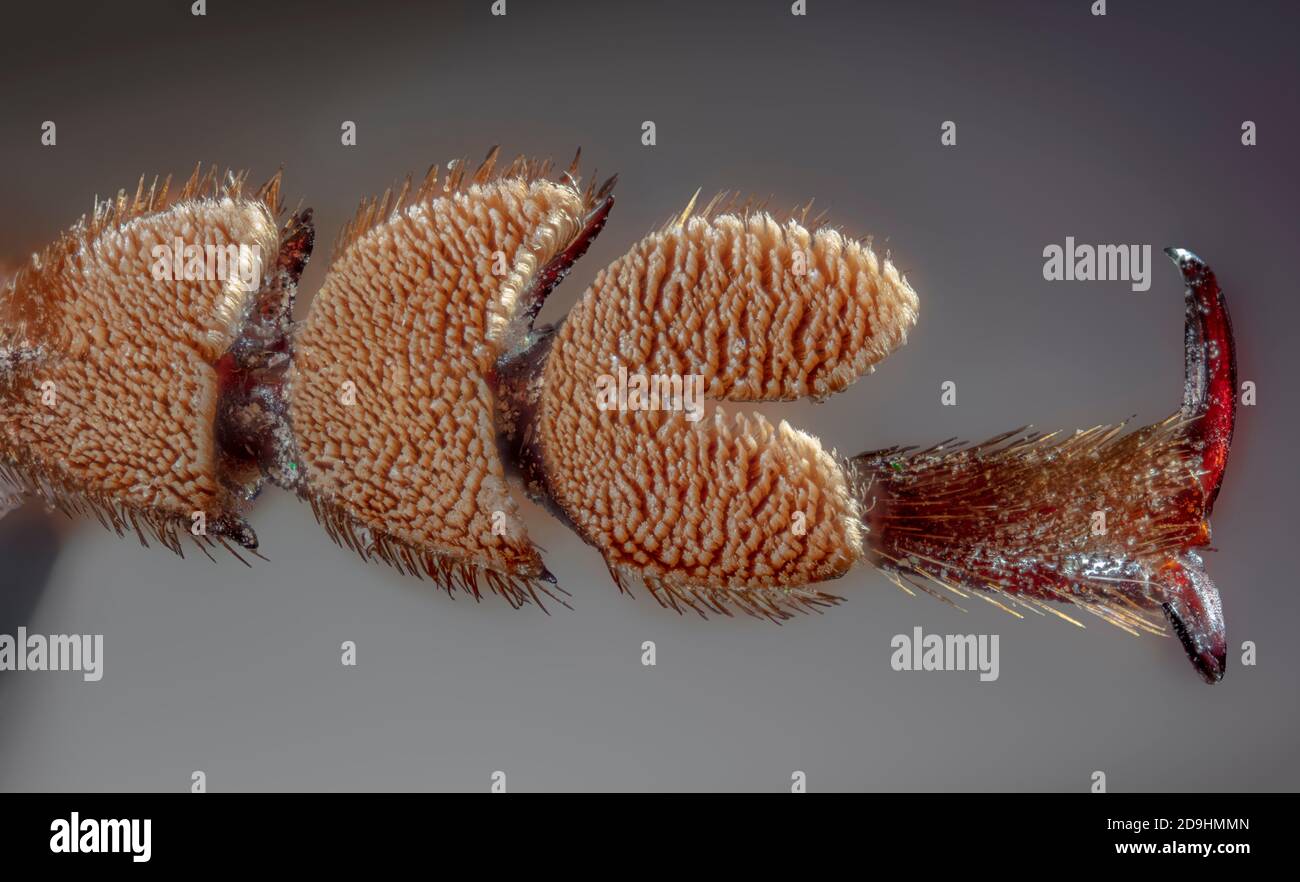ECU of Foot of the Palo Verde Root Borer, also Palo Verde Beetle, Derobrachus geminatus & Derobrachus hovorei

Image details
Contributor:
Phil Degginger / Alamy Stock PhotoImage ID:
2D9HMMNFile size:
108.5 MB (2.3 MB Compressed download)Releases:
Model - no | Property - noDo I need a release?Dimensions:
7885 x 4808 px | 66.8 x 40.7 cm | 26.3 x 16 inches | 300dpiDate taken:
17 July 2020More information:
Setae are specialized hair-like structures that are found on the bodies of many different types of animals, including insects, spiders, and worms. These structures can serve a variety of functions, depending on the species and the location of the setae on the body. In insects, setae can have a number of different roles. For example, they can function as sensory structures, detecting stimuli such as touch, sound, or chemical cues. They can also play a role in locomotion, helping insects to grip onto surfaces or move through their environment. In some cases, setae may also be involved in thermoregulation or in the detection of wind or other environmental factors. The structure and function of setae can vary depending on the species and the location of the setae on the body. For example, some insects have long, slender setae that are sensitive to vibrations, while others have stouter, bristle-like setae that help with grip or locomotion. The presence of setae can also be used to help identify different species of insects or other animals. Beetles, flies, geckos can stick to walls and ceilings because of van der Waals forces.